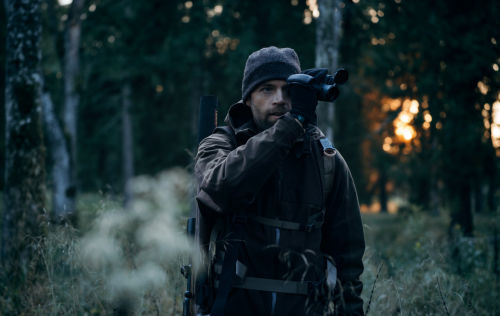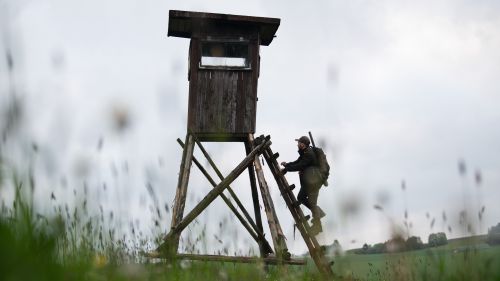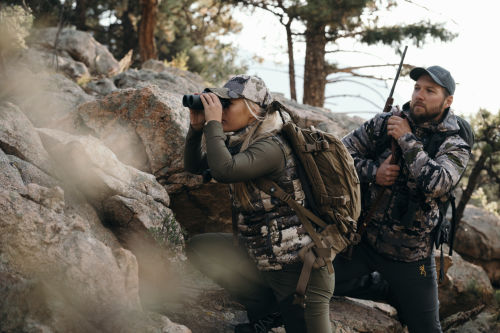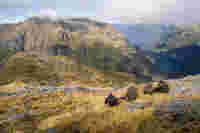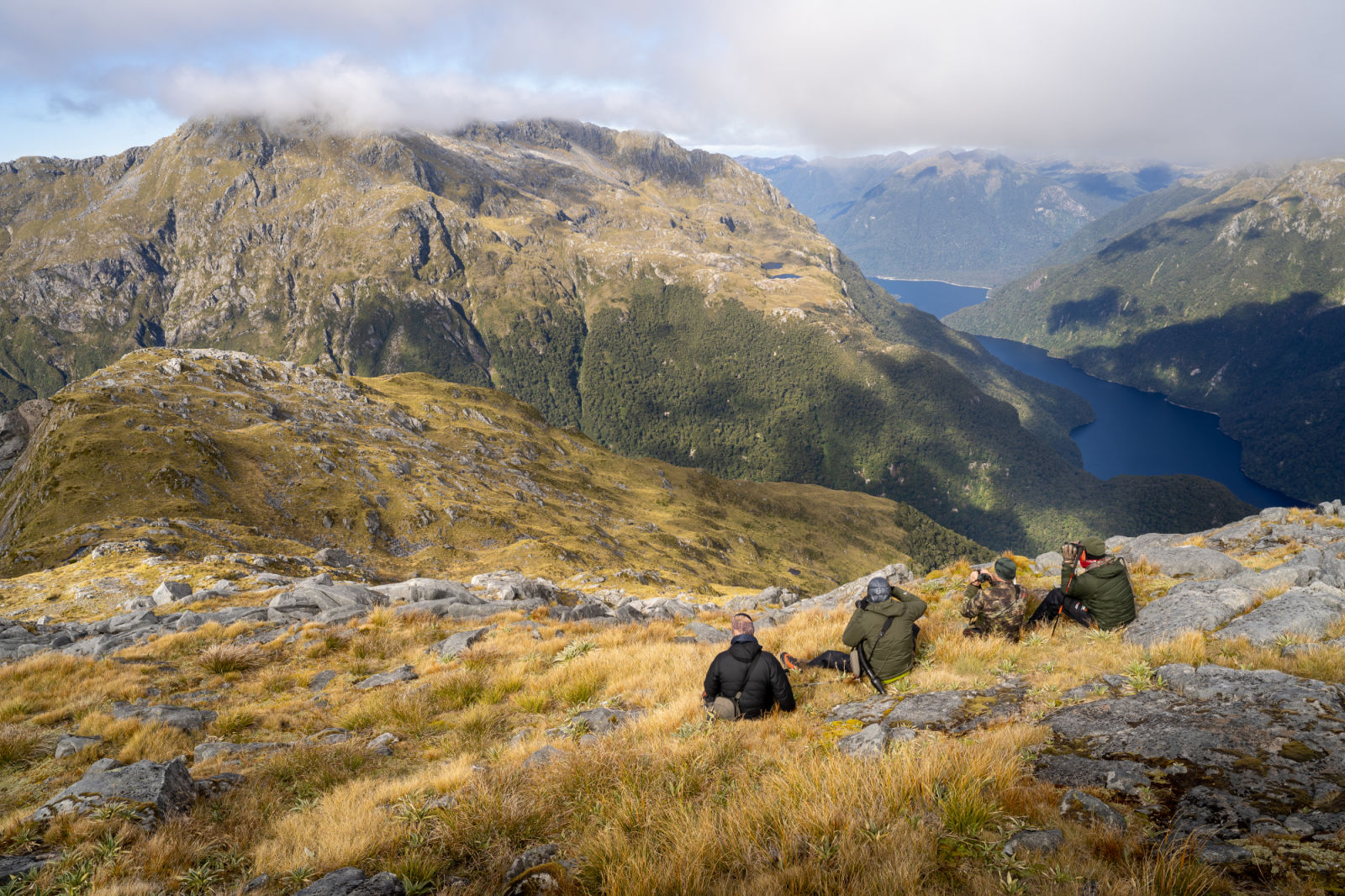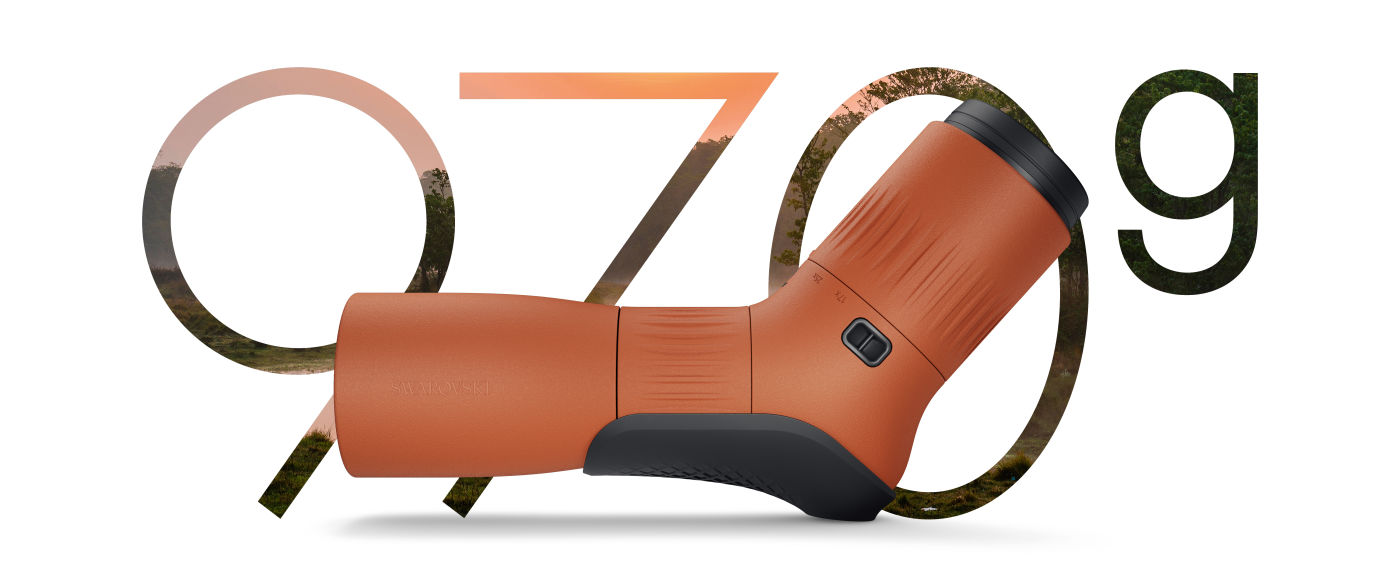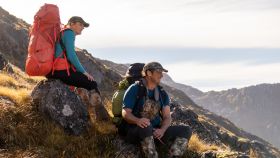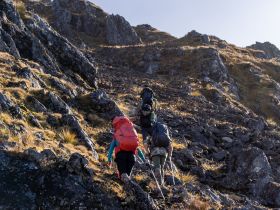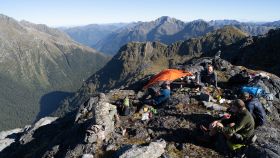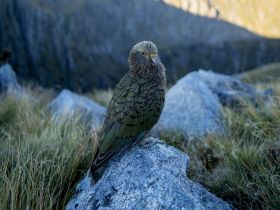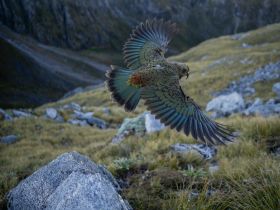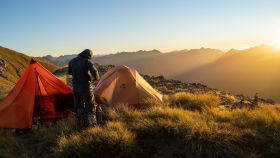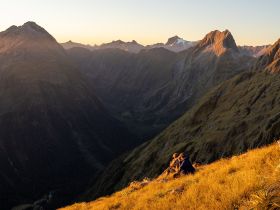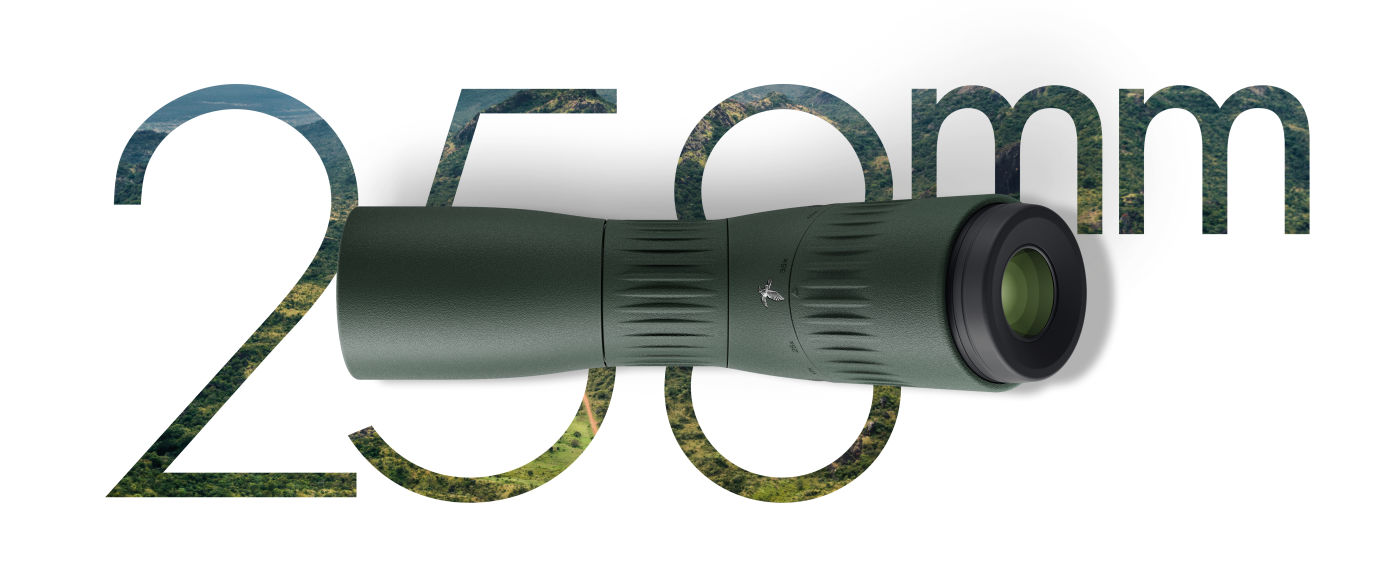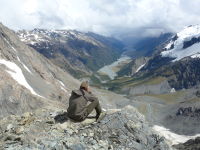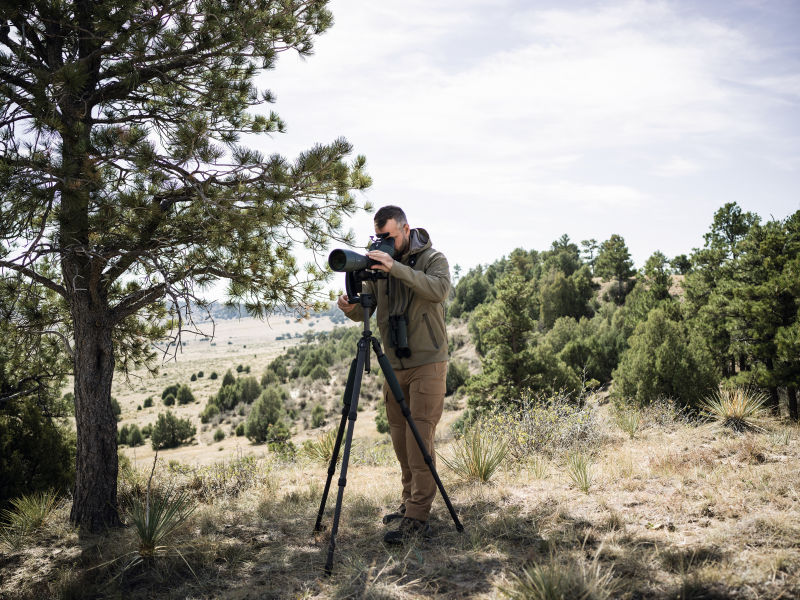My father Greg and I have ventured to Fiordland many times over the years in the annual Wapiti ballot, organized by the Fjordland Wapiti Foundation. For some reason, we’d never been able to convince my mother Fiona to join us. By some miracle, however, we managed to convince her to apply for a ballot in 2021, and the stars must have been aligned as low and behold, she drew the Lower Glaisnock block for the third period in April 2022.

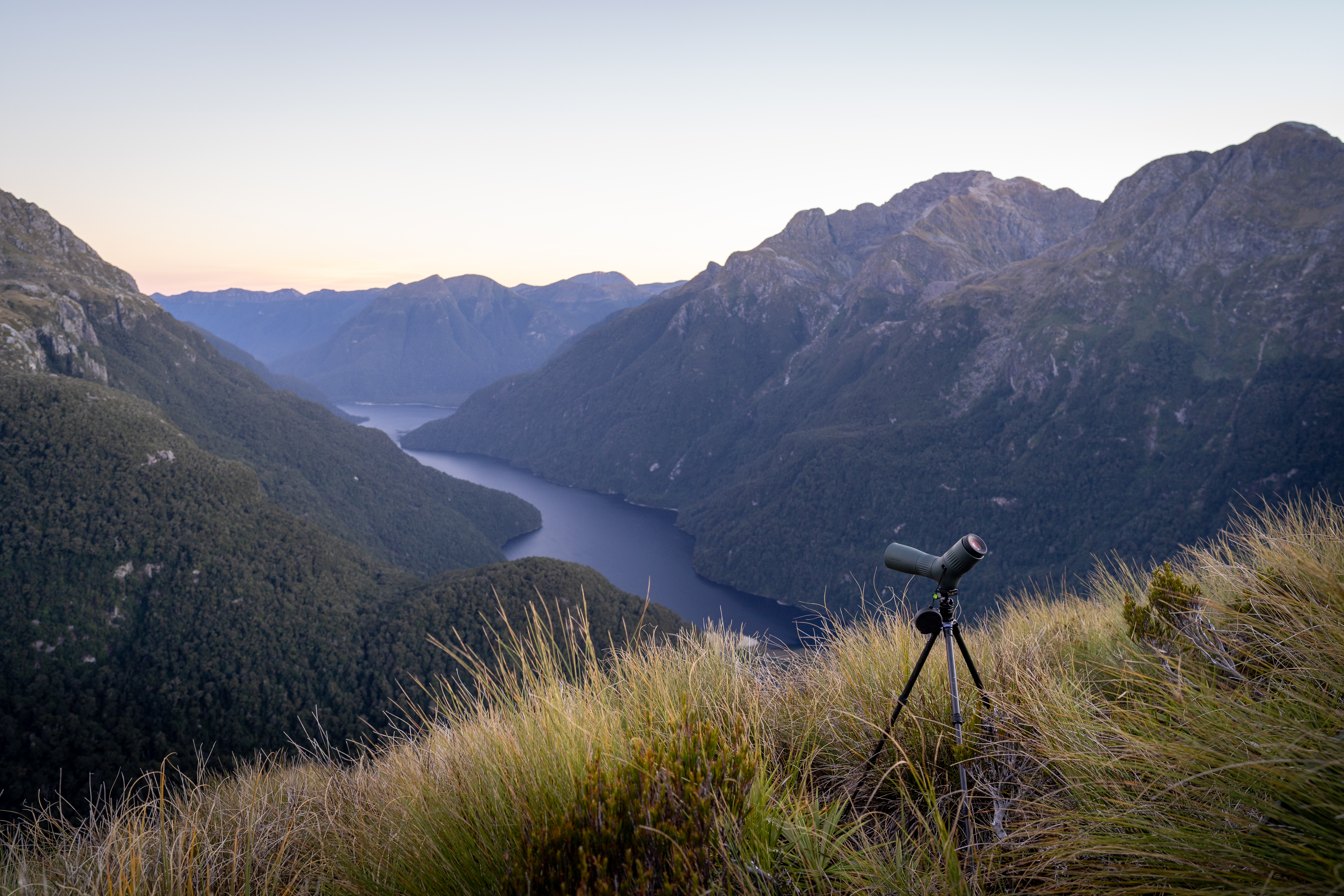
Preparing: When light & compact is key
Every Fiordland Wapiti trip starts with weeks of prior planning and preparation. We were scanning numerous gear lists and were extremely ruthless about what we’re taking with us. Minimizing weight is of the upmost importance as you are literally carrying ten days’ worth of gear in your backpack. Luckily for us, we had the new SWAROVSKI OPTIK ATC spotting scope with us. Its stunningly compact size and light weight was the perfect match for our big backpacking trip.
Day 1 – Our adventure begins
An early start in the small lakeside town of Te Anau saw us boarding a couple of boats for the journey across the lake to the edge of our block. It was a bit of a culture shock as towering mountains and peaks suddenly loomed above us. I’ve once heard Fiordland described as the Amazon Rainforest sitting on top of the Himalayas. I think for people who haven’t ventured there before, that’s a fairly accurate description.
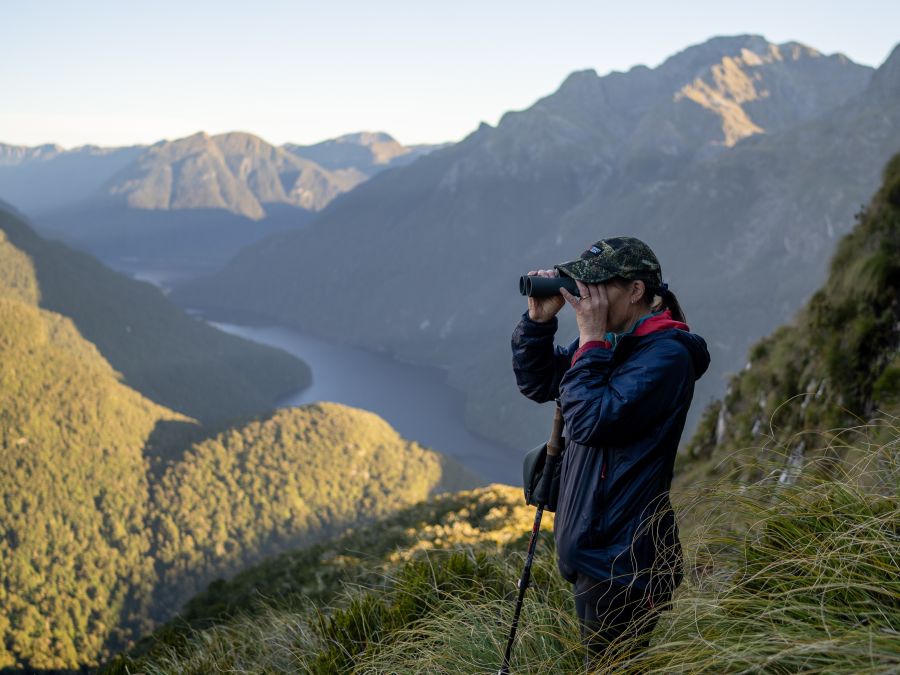

Shouldering our backpacks, we crossed the low flowing Glaisnock River and began the steep 800 metre climb up onto the Nitz-Newton tops. Four hours of pushing through wild forest undergrowth saw us break the bush line into the alpine country. With no animals spotted, we made camp and dreamt of the nine days which were still ahead of us.
Day 2 – Hello, Kea!
Pulling camp, we climbed high and were rewarded with some great scenic views looking far down to Lake Te Anau. A high-pitched Wapiti bugle had us trying to locate our first animal of the trip. Once spotted, a closer look through the ATC spotting scope confirmed that it was a young bull. It was still a few years from its prime, so we moved on and pushed on higher.
We then encountered one of New Zealand’s most colorful backcountry characters, the cheeky Kea (Nestor notabilis). This bird is the world’s only alpine parrot and is very inquisitive, continually wanting to play with your gear and follow you around. This of course did not aid our hunting opportunities, but they still are a really special part of the mountain hunting experience in New Zealand. It is now considered an endangered species, due to predation by introduced mammals. This is why hunters run vast predator trapping operations and surveys to help the Kea survive.
The evening saw us making a sheltered campsite as we expected some gale force winds and heavy rain over the next few days. My mother Fiona had never experienced a Fiordland storm before and was a little apprehensive. We reassured her that this was all part of the Wapiti hunting experience.
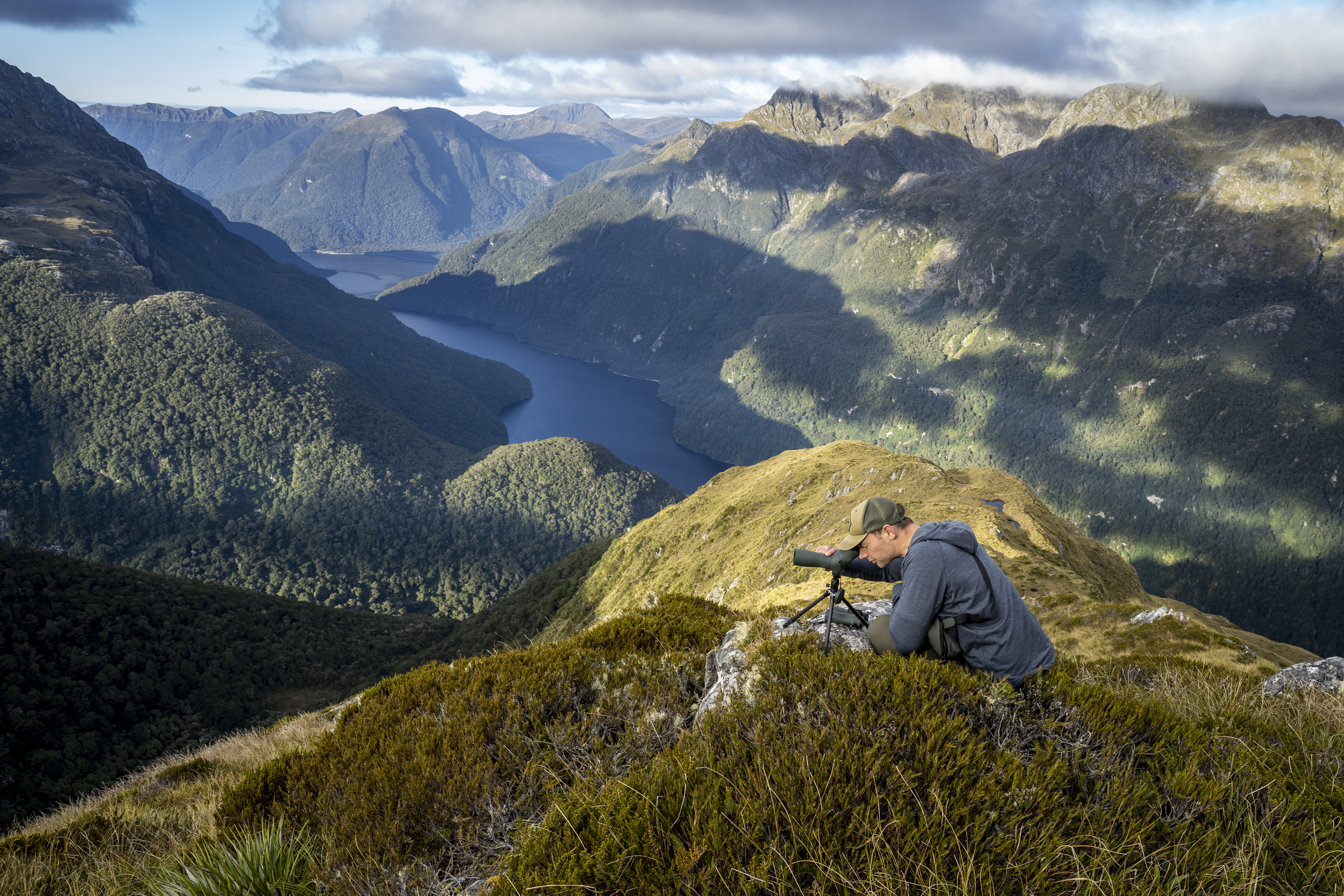
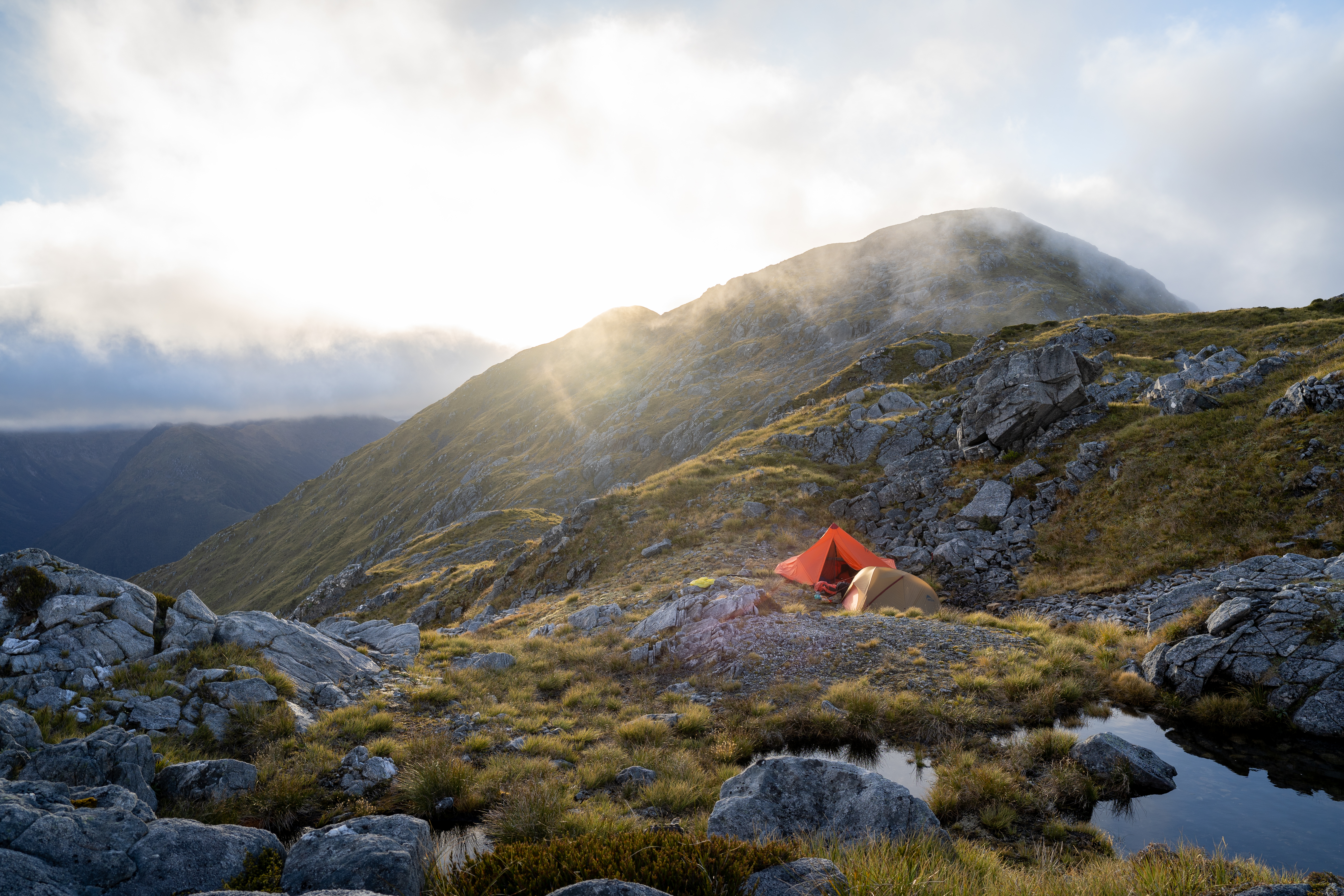
Day 3 – Heavy rain
As expected, we woke to drizzle and strong winds. We were tent-bound for the majority of the day but snuck out for a quick glass or to boil the gas cooker whenever the weather gave us some respite. We thought we’d picked a fairly bombproof campsite to ride out this rough weather…
Day 4 – Wet tents and a 10-point bull
The rain was extremely heavy overnight, much more than expected. Our campsites were beginning to be flooded out by the morning hours. Despite our best attempts to dig drainage channels and bucket the water out, Greg and Fiona’s tent was a goner. Jumping ship to mine and cameraman Emil’s tent with as much dry gear as they could salvage, we huddled together amongst wet sleeping bags and puffer jackets, hoping dawn wasn’t too far away.
Luckily, the weather then cleared, and we were able to dry out all our tents and gear. We managed to spot a few Wapiti throughout the day, including a 10-point bull across the other side of the valley. Evaluation through the ATC spotting scope indicated that he was old enough to harvest. However, shooting a bull would have meant an end to our trip, as it would have added 30 extra kilograms on top of our existing pack weights. Far too heavy to carry on with our trip intentions.

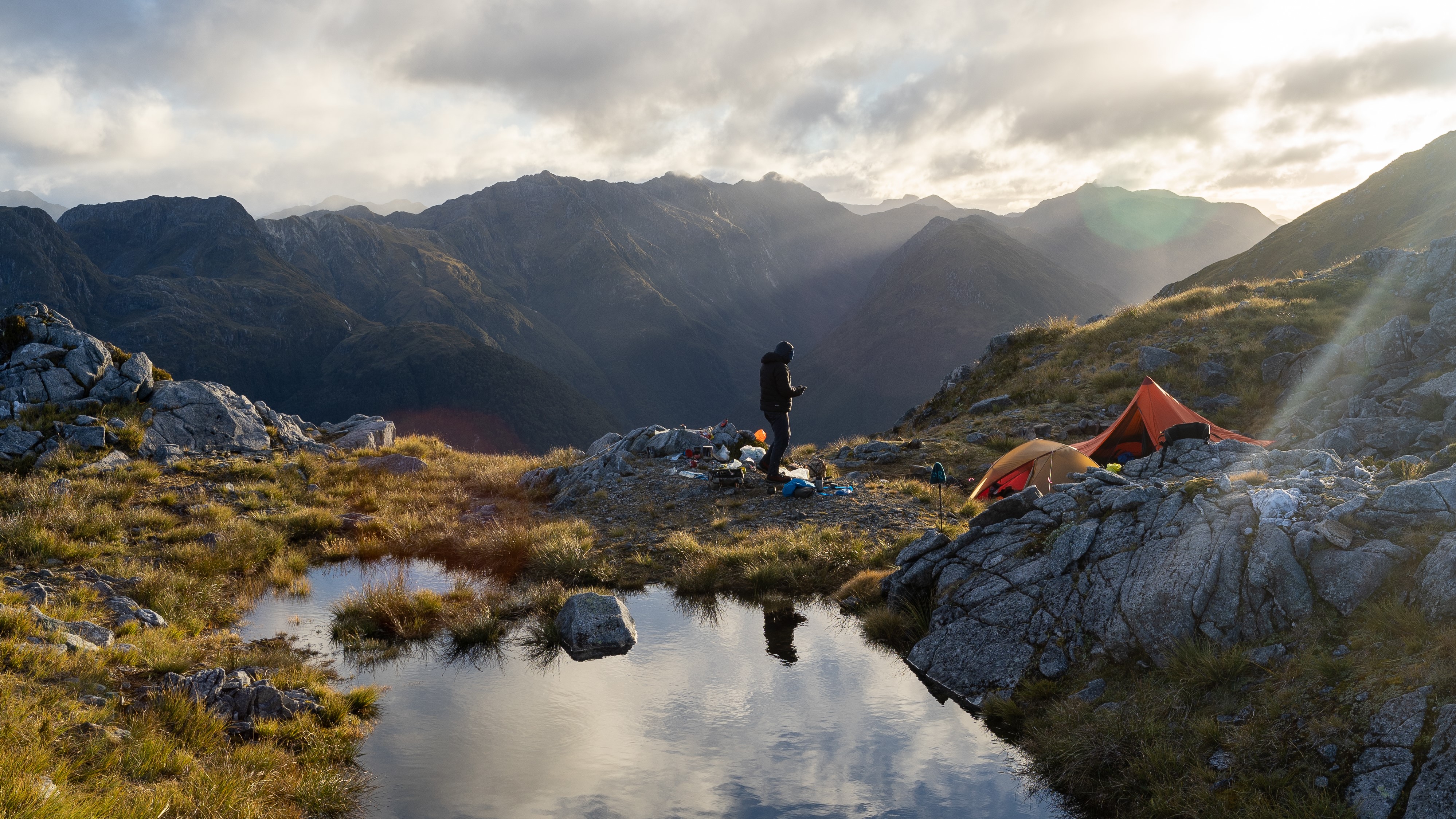

Day 5 – A new campsite
The morning dawned clear, and we headed for fresh country, completing a big climb down and back up, before sideling around amongst a flock of Kea to our new high campsite. The fresh hunting prospects were exciting, and we quickly located a few cows and young bulls, but not quite the right bull we were after.
Day 6 – Promising sightings
My father Greg and I headed off with just some simple day gear and the ATC spotting scope, as we wanted to travel fast and light. Cresting the ridge, I quickly spotted a 12-point-bull, but it was still a few years off his prime. Nonetheless, it was a rewarding encounter watching this impressive animal feeding its way around the basin.
We later spotted a big looking bull silhouetted on the skyline far across the other side of the main valley – an animal that definitely warranted closer inspection. We decided to drop lower and camp above the bush edge for the night, glassing both the flats and across the valley where we’d seen the big bull.



Day 7 – Downwards
We made the call to pull camp and make the steep and unknown descent down through the thick bush canopy to the bottom flats. We hoped this would place us in a better position to find the bull of the previous evening. What we saw was a couple of younger animals doing their rounds on the flats. In addition, the up- valley breeze certainly wasn’t helping our chances. We settled for the night, with the forecast for rain.
Day 8 – Rest and Restart
Persistent drizzle kept us largely tent-bound. It was nice to have a bit of a rest after a couple of big days on our feet. We did manage to relocate the big bull up high during a clearance on evening and decided to climb up for him in the morning.
Day 9 – The big Wapiti bull
Leaving camp early, we worked our way up an old vegetative avalanche chute to the mountain tops. We were hoping that the warming thermal winds blowing straight up would stay in our favor. Just as we crested the ridge, we could see the cows trotting out of sight. Trailing them was the big bull and we expected him to disappear too. For some unknown reason, however, he stopped and sat down on the ridgetop. We couldn’t believe our good fortune.
He was still 800 yards off, so we did our best to quickly close the gap between us while remaining out of sight. We peered round the last corner and spotted him still sitting there. What a relief!
It was a mature 12-point bull, eight or nine years old. Once Fiona was ready and set behind the rifle, Greg let out a bugle to try and make the Wapiti stand up. The bull stood immediately, turned, and came bolting in our direction, bugling as he ran. The anticipation grew the closer he got to us. When he paused and presented us his broadside, Fiona took her chance. We were overwhelmed in emotion.
It is always a bittersweet feeling harvesting such a majestic animal. We were elated to have finally struck success after nine big days in the mountains, but you will always feel some remorse for the animal and removing it from the herd.
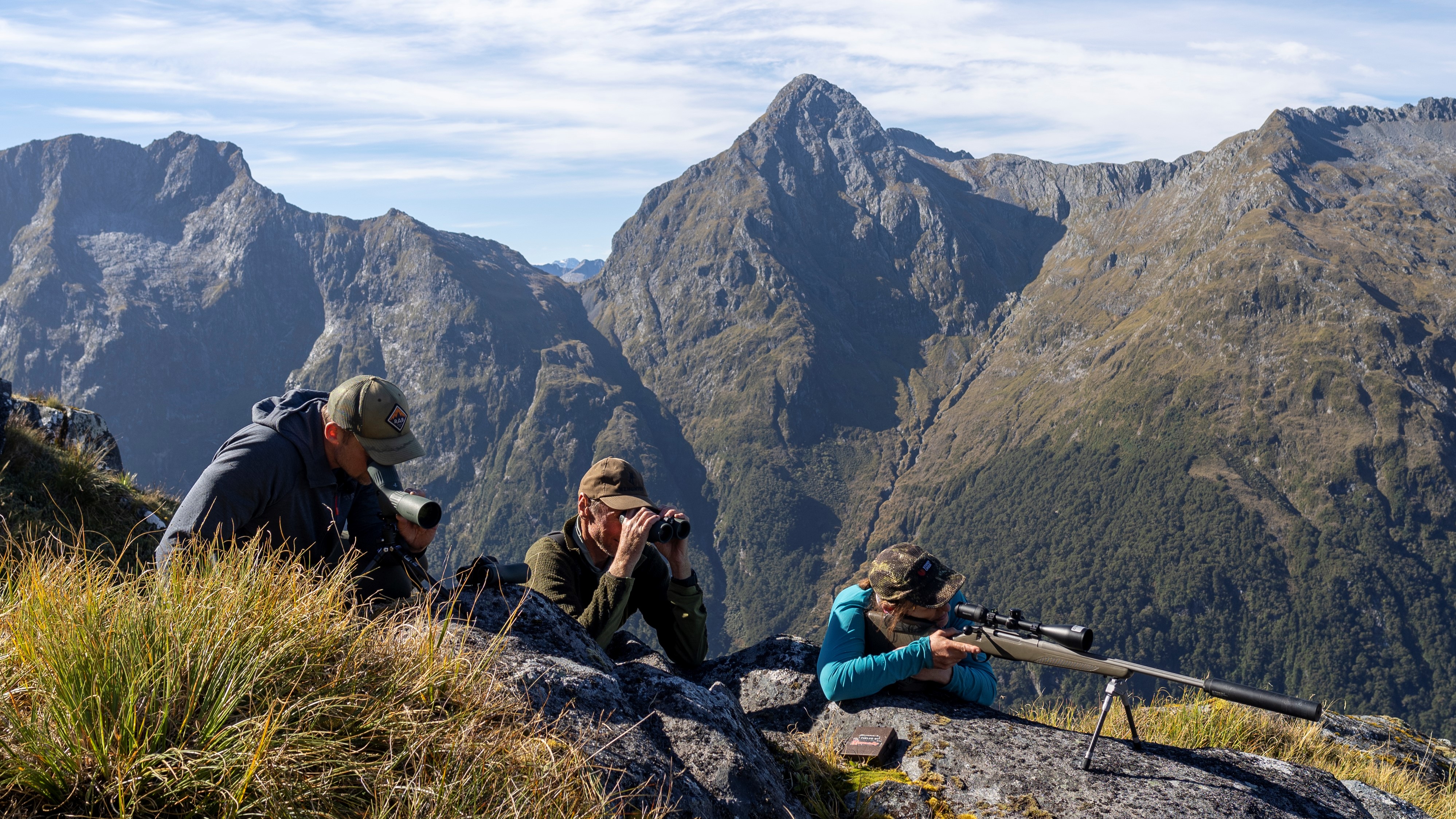
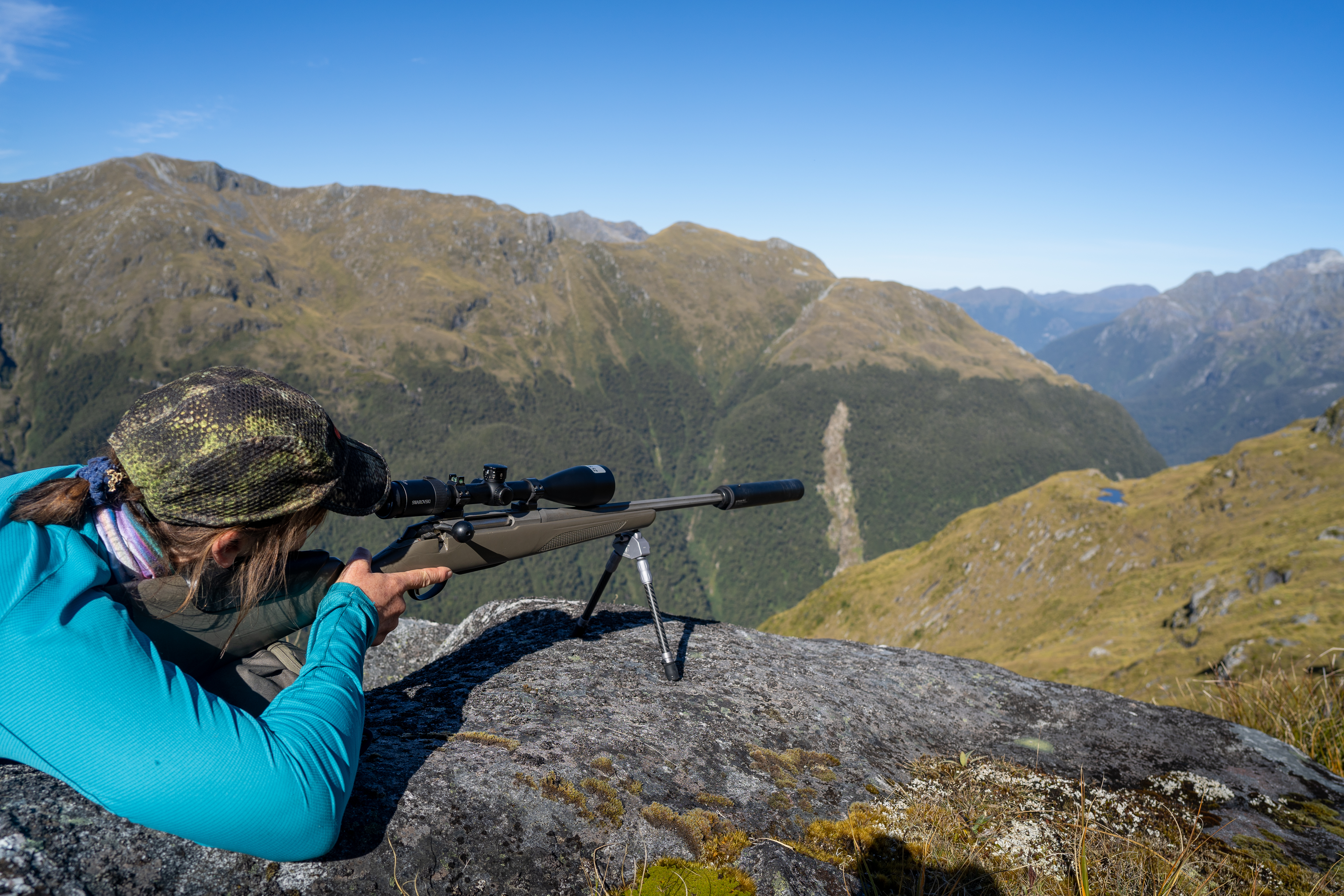
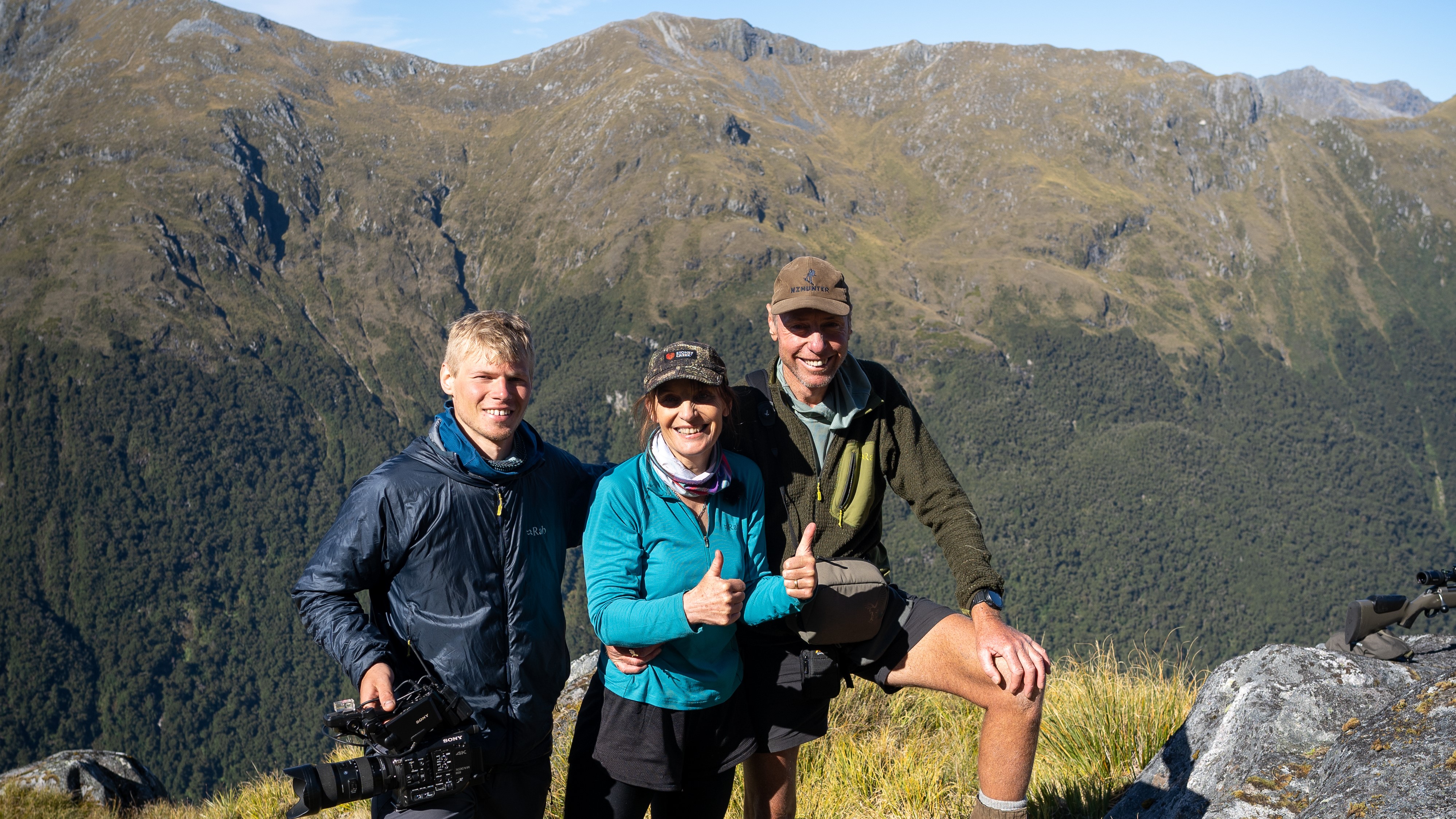
Day 10 – Good memories
The final day of our hunting period had dawned. Standing on the lakeside with both my parents, numerous priceless memories and plenty of fresh venison to share, all the hardships were quickly forgotten, and I would’ve done this journey all over again in a heartbeat.
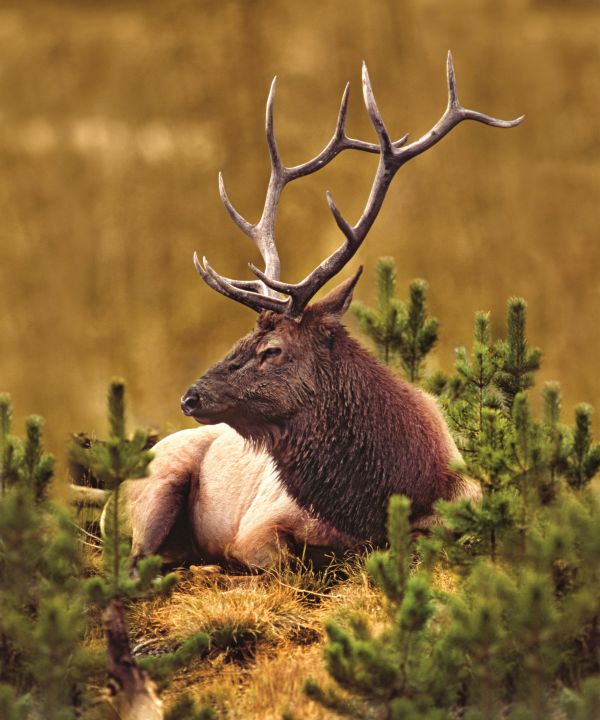
How Wapiti arrived
on New Zealand
Wapiti (Native American name for Elk, meaning “white rump”) were first introduced to New Zealand back in 1905, when American President Theodore Roosevelt gifted 10 animals to the New Zealand Government. The animals were released in the George Sound area of Fiordland National Park, some of the most rugged and inhospitable landscapes in New Zealand. Despite all odds, the Wapiti thrived, and the remaining herd is now managed by the Fiordland Wapiti Foundation, who run an annual ballot during the Wapiti bugle or rut. It is regarded as one of the greatest hunting experiences on the planet.

About
Willie Duley
Willie Duley is a passionate hunter and conservationist from the wilds of New Zealand. He grew up in a family that was immersed in the outdoors and nature, with his parents being the producers of the popular NZ Hunter Magazine. Willie himself hosts and produces the matching outdoor television show NZ Hunter Adventures. As a father, he hopes to offer his family an equally rewarding childhood growing up surrounded by wild people, places, and animals.
